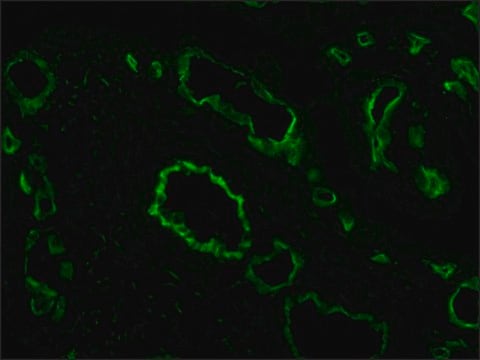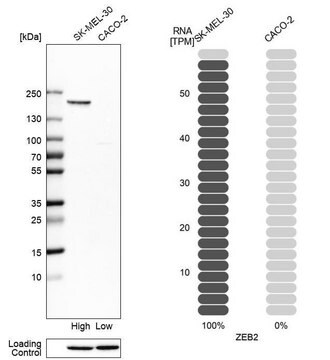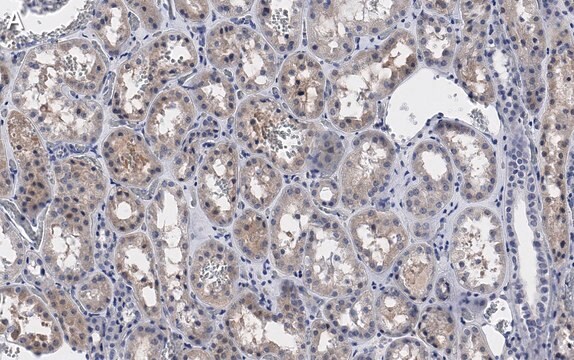SAB4200854
Anti-FAT10 antibody, Mouse monoclonal
clone FAT10-7, purified from hybridoma cell culture
About This Item
Productos recomendados
forma del anticuerpo
purified from hybridoma cell culture
Nivel de calidad
clon
FAT10-7, monoclonal
formulario
liquid
reactividad de especies
human, mouse
concentración
~1 mg/mL
técnicas
immunoblotting: 4-8 μg/mL using whole lysate of human hepatocellular carcinoma HepG2 cells
isotipo
IgG1
Nº de acceso UniProt
Condiciones de envío
dry ice
temp. de almacenamiento
−20°C
modificación del objetivo postraduccional
unmodified
Descripción general
Especificidad
Aplicación
Acciones bioquímicas o fisiológicas
FATylation has an important role in many cellular processes varied from cell maintenance to DNA repair. Understanding FAT10 mechanism and finding its downstream substrates is important to reveal its potential role in inflammation-induced tumorigenesis.1-7
Forma física
Almacenamiento y estabilidad
Cláusula de descargo de responsabilidad
Código de clase de almacenamiento
12 - Non Combustible Liquids
Clase de riesgo para el agua (WGK)
WGK 1
Punto de inflamabilidad (°F)
Not applicable
Punto de inflamabilidad (°C)
Not applicable
Certificados de análisis (COA)
Busque Certificados de análisis (COA) introduciendo el número de lote del producto. Los números de lote se encuentran en la etiqueta del producto después de las palabras «Lot» o «Batch»
¿Ya tiene este producto?
Encuentre la documentación para los productos que ha comprado recientemente en la Biblioteca de documentos.
Nuestro equipo de científicos tiene experiencia en todas las áreas de investigación: Ciencias de la vida, Ciencia de los materiales, Síntesis química, Cromatografía, Analítica y muchas otras.
Póngase en contacto con el Servicio técnico








